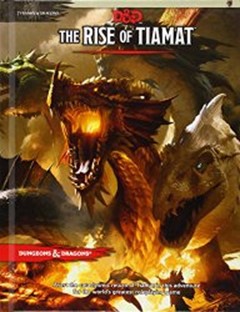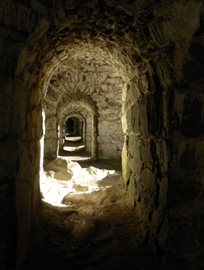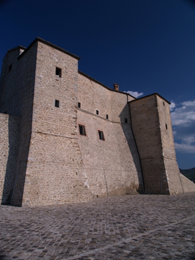 The second section of the Tomb of Diderius has the problem most small lairs have: what happens when the party kills most of the monsters and then retreat? Are they followed by the Yuan-Ti seeking revenge? Do the Yuan-Ti just kill Varram and flee? Having monsters act intelligently when a party of adventurers makes return visits to their lair is one of the major challenges of being a Dungeon Master – and suggestions for handling such situations were given by Gary Gygax in the original Dungeon Masters Guide. For some reason he neglected to mention what Yuan-Ti would do in this adventure…
The second section of the Tomb of Diderius has the problem most small lairs have: what happens when the party kills most of the monsters and then retreat? Are they followed by the Yuan-Ti seeking revenge? Do the Yuan-Ti just kill Varram and flee? Having monsters act intelligently when a party of adventurers makes return visits to their lair is one of the major challenges of being a Dungeon Master – and suggestions for handling such situations were given by Gary Gygax in the original Dungeon Masters Guide. For some reason he neglected to mention what Yuan-Ti would do in this adventure…
My group had negotiated with the Bearded Devils and discovered that the devils didn’t want to fight (although they were happy to be sarcastic), and then made their way to the actual Tomb of Diderius. They negotiated with his ghost, and he showed them the path to Varram – who was held by the Yuan-Ti. The serpentfolk’s guards – a group of lizardmen – were surprised and slain by the party, but not before one escape, running quickly away from the group shouting at the top of his voice.
The Battle of the Bridge could have been very hard, with a sloping, slippery bridge making it very difficult to cross safely, and with Yuan-Ti archers peppering the group with arrows. However, it didn’t take long before the party got sick of this and threw a couple of fireballs at the Yuan-Ti. That rather dealt with that!
Most of the party crossed the bridge – carefully – but two characters climbed down into the chasm below and crossed the floor. The first did so stealthily, and made it across safely. The second was dressed in plate armour, and soon attracted a number of snakes that slithered out a number of holes in the chasm’s walls. He was bitten a few times before he finally re-joined the others, who weren’t all that sympathetic to his complaining.
There was more fighting with Yuan-Ti in the corridors, before the group discovered the hatchery, and that proved very tricky. They didn’t handle it well – and they weren’t aided by being out of fireballs. Eventually they were forced to retreat, but they were pleased to see that the Yuan-Ti weren’t following.
 They continued onwards, discovered the great hall of the Yuan-Ti (with several leaders and the bound dwarf they were after), but chose to retreat rather than facing them immediately. Instead of actually going for a rest, they kept exploring and discovered a couple of suits of plate mail that filled with snakes and attacked them. One of the party went down, but was saved by the bravery of another; eventually they defeated the animated armour (aided by some well-aimed critical hits from a magic bow) and left the halls of the Yuan-Ti, finally choosing to rest in the room of the Bearded Devils. The devils still didn’t attack them.
They continued onwards, discovered the great hall of the Yuan-Ti (with several leaders and the bound dwarf they were after), but chose to retreat rather than facing them immediately. Instead of actually going for a rest, they kept exploring and discovered a couple of suits of plate mail that filled with snakes and attacked them. One of the party went down, but was saved by the bravery of another; eventually they defeated the animated armour (aided by some well-aimed critical hits from a magic bow) and left the halls of the Yuan-Ti, finally choosing to rest in the room of the Bearded Devils. The devils still didn’t attack them.
Yes, there was a reason the devils weren’t attacking them: they had been ordered to stop anyone from leaving the complex. And being Lawful Evil, they were having a lot of fun interpreting that as literally as possible. And making the players quite uncomfortable. Though not uncomfortable enough to not stay in the room. The trusting fools! J
At this point, I had to decide what the remaining Yuan-Ti would do. They weren’t trapped – there’s a hidden entrance to outside – and they’re hardly the only Yuan-Ti in the hills. (They’re called the Serpent Hills for a reason…) Would they get reinforcements? Quite possibly, but replacing all those slain by the party seemed a little unfair – especially given the limited time involved. Rather, going from indications in the adventure, I decided that they definitely would attempt to negotiate with the party (you take the dwarf, we stay alive!), while reinforcing the hatchery and setting a guard or two to give advance warning.
The adventurers didn’t notice the scouts, but the group made their way to the audience chamber unchallenged and were rather worried by the sight of the Yuan-Ti leaders. As a result, they were more than willing to negotiate and take the dwarf (and leave the rest of the Yuan-Ti in peace).
Of course, this meant they were leaving the tomb – which meant the Bearded Devils were freed to attack them. Instead of a regular Perception check, I used the players’ Passive Insights against Deception checks made by the devils to determine their change of manner. Most of the party failed it, and so were surprised by the devils. Yes, eventually the group were victorious (they hadn’t fought today, after all), but it was a shock to them.
That ended their exploration of the Tomb. They hadn’t found everything, but they’d been successful in finding Varram. Now all they had to do was return home with him…
Returning to an Enemy Lair or Stronghold
 Gygax gave the following possibilities of how monsters may react when the adventurers leave and then return to a lair or stronghold:
Gygax gave the following possibilities of how monsters may react when the adventurers leave and then return to a lair or stronghold:
- Mindless creatures do nothing between expeditions; anything damaged remains damaged
- A colony of giant ants would repair damage and replace some casualties, but would otherwise react as the first time.
- A tribe of chaotic orcs may be reinforced by returning tribe members, but wouldn’t call for reinforcements. They’d have more guards and set up warning devices; they may have attacked the party if the party was camped too close.
- A small town would employ mercenaries, request help from nearby fortresses and towns, and all able-bodied people would join the militia. Scouting parties would hunt down the party, and they’d pursue the party if they retreated again
- A bandit camp might be gone the second time around, but otherwise would create a lot more defenses and ambushes. An ambush or assassination attempt against the party? Very likely.
- A fortress would replace everyone and get extra men besides, and be very sneaky about its defenses: spellcasters disguised as guards, pursuit of invaders, and a sally force to attack invaders from the rear.
You’ll find his discussion of this topic in the AD&D Dungeon Masters Guide under “Monsters and Organisation”, pages 104-105.
The fact is that the DM has a lot of ability to make the world “live” and react to the players’ actions. It helps a lot with verisimilitude. Areas shouldn’t remain static; if an area is cleared out, it will only be so long until the remaining monsters make use of the space or a new group moves in. Obviously, time scale is important here. If the group are only a day or two between expeditions, the monsters of the dungeon will be on the defensive, but there won’t be much other changes. However, if the group spend a month between expeditions, then you, as DM, can make a lot of changes in the meantime to the make-up of the dungeon.
Don’t forget the possibility of negotiation with the monsters – if the monsters realise the group are more powerful than them, they may parlay with them in order to discover what they want. Most monsters do want to live!
